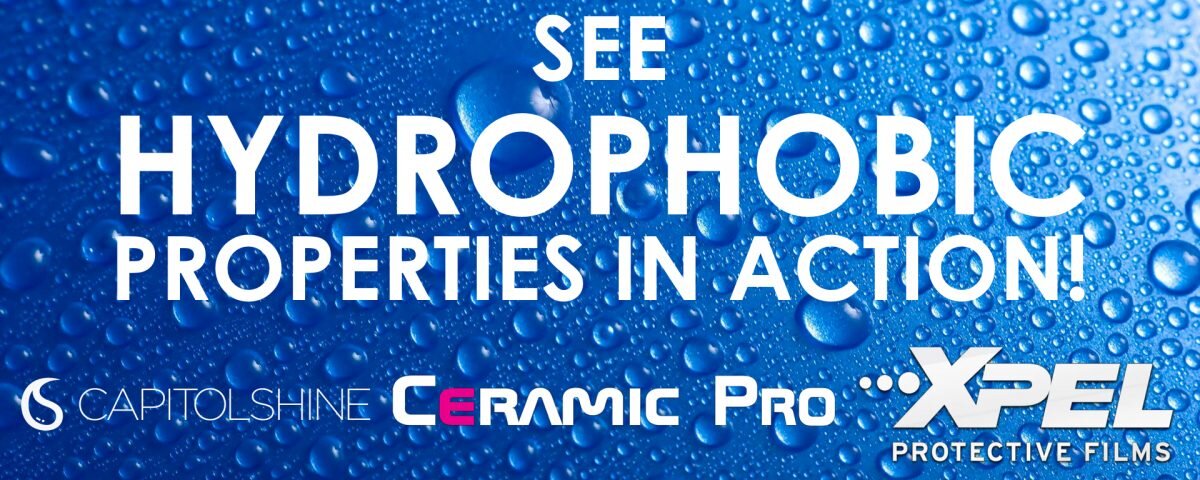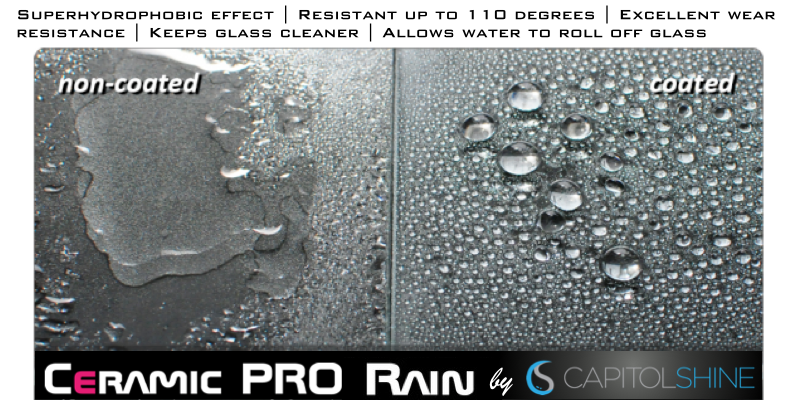What Is The Lotus Effect and A Hydrophobic Surface?
The Lotus Effect and Hydrophobic Surfaces
“The lotus effect refers to self-cleaning properties that are a result of ultrahydrophobicity as exhibited by the leaves of Nelumbo or ‘lotus flower.’” (source)
Why are we talking about the hydrophobic properties of a plant? Because it’s the same thing that happens to your paint once you apply Capitol Shine’s Ceramic Pro:
Applying Capitol Shine’s Ceramic Pro formula to the surface of your car’s paint, glass, wheels and interior creates a “hydrophobic” surface, meaning the surface literally repels liquids – water rolls off instead of sticking.
If you would like another explanation about this phenomenon, here’s one from Collège de France, courtesy of the National Center for Biotechnology Information and U.S. National Library of Medicine, located in Bethesda MD:
“It is well known that the roughness of a hydrophobic solid enhances its hydrophobicity. The contact angle of water on such flat solids is typically of the order of 100 to 120 degrees, but reaches values as high as 160 to 175 degrees if they are rough or microtextured. This result is remarkable because such behaviour cannot be generated by surface chemistry alone. Two distinct hypotheses are classically proposed to explain this effect. On one hand, roughness increases the surface area of the solid, which geometrically enhances hydrophobicity (Wenzel model). On the other hand, air can remain trapped below the drop, which also leads to a superhydrophobic behaviour, because the drop sits partially on air (Cassie model). However, it is shown here that both situations are very different from their adhesive properties, because Wenzel drops are found to be highly pinned. In addition, irreversible transitions can be induced between Cassie and Wenzel states, with a loss of the anti-adhesive properties generally associated with superhydrophobicity.” (source) – Collège de France
That’s a lot to absorb (or not absorb?), but the take-away point is that water rolls off instead of sticking. For Capitol Shine’s Ceramic Pro, not only does this protective coating help to repel water and avoid water marks, but it’s also helps protect your paint and wheels from sun damage, dirt, rocks, scratches, corrosion and more. ceramicpro-dc.com.
Ceramic Pro RAIN For Winshields and Glass
With rain expected this week, it reminded us to also mention the same protection is available for windshields in the form of Capitol Shine’s Ceramic Pro RAIN. Similar to Rain-X, CP RAIN helps water to bead up on your windshield, which makes for a clearer view of the road and safer driving. What separates Capitol Shine’s Ceramic Pro RAIN from similar products, like Rain-X, is the durability and hydrophobic characteristics. Once applied, this product lasts up to a year! Our Ceramic Pro RAIN:
Keeps glass cleaner
Is super hydrophobic – up to 110 degrees
Allows water to roll off glass
Has excellent wear resistance
Here’s what hydrophobic properties look like in action – no windshield wipers needed!
The video above shows just how Capitol Shine’s Ceramic Pro formula works for windshields – no wipers were needed! Explore all of our protective coatings for windshields, paint, wheels and more here, then schedule your appointment or estimate online.
For any detailing, such as car washes, vacuuming and interior shampoos, please schedule your appointment at www.capitolshine.com/schedule-your-shine. Please schedule at least 24 hours in advance to ensure time and date.





